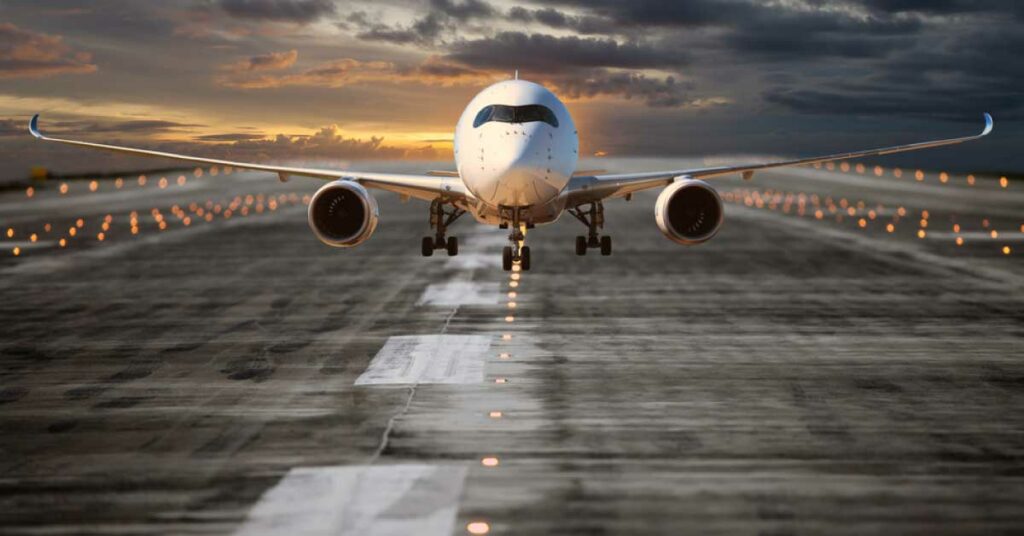Airbus‘ Project Connect will facilitate a reduced cockpit crew member capacity.
Machinery and its associated technologies have transformed the client experience in financial businesses, supermarkets, and hospital operating theaters around the world.
However, could a computer transport several passengers in an aircraft at a voyaging altitude of 35,000 feet for hours, and handle the landing and take-off?
Pilots have been helped by computers for a long time via advancements like auto-pilot and technologies associated with navigation.
Technological advancements have been made in the driving industry for the creation of driverless cars and lorries. However, now, research is determining whether computers and robots can replace pilots in the skies.
To be exact, research is not seeking aircraft that are devoid of pilots, but at the number of crew members in the cockpit to be present for a long-haul flight.
Aviation strategy consultant and head of the Middle East Aviation Research Center, Nadine Itani, stated that a long-haul flight is a flight that goes over 6 hours. She added that long-haul flights generally need a layover between take-off and the final destination.
Airbus‘ Project Connect will facilitate a reduced cockpit crew member capacity
Hong Kong-based Cathay Pacific and European Airbus have initiated Project Connect, where a minimum number of cockpit crew members (2 pilots) are required to fly a long-haul aircraft. This reduced cockpit crew member capacity will replace the existing capacity of 3-4 pilots present on all long-haul flights. Project Connect will give the liberty of only 1 pilot to be present in the cockpit in rotation. When one pilot breaks for rest, the other can take the former’s place in the cockpit.
Cathay Pacific established that it was brainstorming methods to facilitate the appointment of reduced-crew members.
German airline Lufthansa also stated that it had worked on a similar program.
Single-pilot endeavors were already mandatory on small planes like private jets and military aircraft, which held up to 9 passengers. However, the ability to facilitate the same concept on larger aircraft that were commercial (which last for over 6-7 hours) is still an ongoing process.
Machines of this degree of bulkiness are more susceptible to errors that might lead to accidents. To safeguard the safety of passengers, challenges need to be addressed.
This concept of a reduction in cockpit crew members has to also undergo a vigorous inspection through regulators. Organizations like the Federal Aviation Administration in the USA, the International Civil Aviation Organization, and the EU Aviation Safety Agency need to support and agree to this endeavor.
The partner and head of transportation and services for India, Africa, and the Middle East, Michael Wette, stated that the security aspect of such an endeavor is the biggest challenge for engineers.
Currently, the industry is witnessing a surplus of pilots. However, Wette notes that there is a shortage of pilots expected shortly. Technical studied like Project Connect will most probably continue as they have been for some time.
Approximately 25,000 pilots have been laid off owing to the COVID19 pandemic. However, 75% of those pilots have returned to flying as flight voyages have increased over the past few months. The remaining pilots are still on extended leave and nearly 10,000 pilots have opted for early retirement packages and have renounced the job owing to the pandemic.
The Project Connect research was started by the US National Aeronautics and Space Administration in 2012. Over the years, the pressure for reduction in costs has been intensified.
At its peak, the aviation industry functioned on low-profit margins. The industry was constantly brainstorming ideas to facilitate cost reduction of operating aircraft. These ideas included limiting the salaries of crew members and reducing the training, accommodation, and recruitment expenses.
Approximately 25% of the aircraft expenses are comprised of crew costs. This was the biggest expense for the industry after fuel expenditure.
The concept of reduced-crew members is of great urgency since the beginning of the COVID19 pandemic. The badly affected aviation industry saw bankruptcy and many pilots had been furloughed.
Air travel has not reached its pre-pandemic standards. The present worldwide average of flight hours is around 65% of the pre-pandemic levels. This includes the Gulf region. Major expeditions today mostly comprise of family emergencies and leisure and are not business-related.
Airbus stated that its research was grounded on two operating crew members per flight, and tests were also being conducted to convince regulators and partners of the airline.
An Airbus official stated that safety was the top priority for the European aircraft producer and that the associated technologies have not yet reached complete maturity and availability. The application of this endeavor will first witness single-pilot operations in the cruise phase, he added.
Infrastructure issues also need to be addressed for the fruitful completion of Airbus’ Project Connect. Single pilots need to converse with the ground in case of safety hazards and emergencies. The airports are expected to upgrade their radio technology and ground operations.
Previously, the decision-making was facilitated by the pilots in cockpits. However, during a single-pilot flight, communication must take place with somebody apart from a machine.
The Middle East will play an important role in Airbus’ Project Connect
A substantial base of international operators has been closely observing the status of Project Connect. At present, single-pilot operations are being tested on Airbus A350 jets. Qatar Airways has major development plans with the launch of its Airbus A350. The airline is a part of the Oneworld Alliance. Singapore Airlines is currently the biggest procurer of the Airbus A350 jets.
Middle Eastern airports and carriers play an important role in the connectivity of the east and west regions, through airports such as Dubai, Doha, and shortly, Jeddah, and Madinah.
If this single-pilot operation’s endeavor, witnesses, approval from all its authenticators and authorities, the Middle Eastern airports will have a major role to play.
